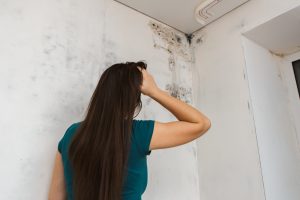Types Of Mold
There are many types of molds, and some can affect your health while others won’t cause any ill affects. It has been shown that healthy people exposed to mold can experience symptoms of coughing, wheezing and other asthma like characteristics. Prolonged exposure can increase the risk of infections or other respiratory illnesses.

How Mold Affects You
There are many types of molds, and some can affect your health while others won’t cause any ill affects. It has been shown that healthy people exposed to mold can experience symptoms of coughing, wheezing and other asthma like characteristics. Prolonged exposure can increase the risk of infections or other respiratory illnesses.
No matter the type of mold, or how you believe it is affecting you, the CDC recommends removal of any type of mold you come across.
Mold and Moisture
Where there is moisture, you will often find mold. Leaky ceilings, damp basements or steamy bathrooms can all be prime locations for mold growth. Control and prevention of mold growth requires you to be quick to respond to any place where there is excess moisture.
- Vents over kitchens
- Bathrooms
- Cleaning up after floods
- Leaky Ceilings
No treatment of mold is complete without also fixing the source of the moisture as even a single left over spore will cause the problem to return when conditions are right.
Getting Rid of Mold
Once you have mold growing, it won’t ever go away on its own. You can dry it out, to make it an inhospitable place for future growth, but the existing mold will still need to be dealt with. There are different ways people use to get rid of mold:
US Army Corps of Engineers Tests Our System

Learn how our unique dry fog system stood up to the rigorous tests put forth by the US Army Corps of Engineers






